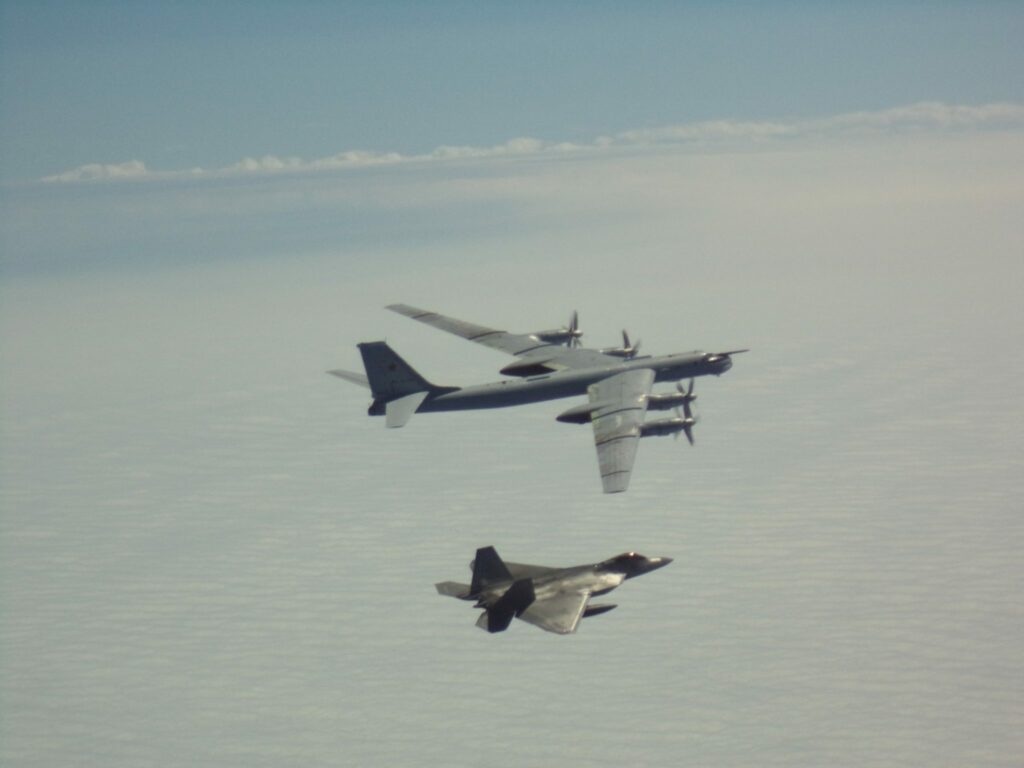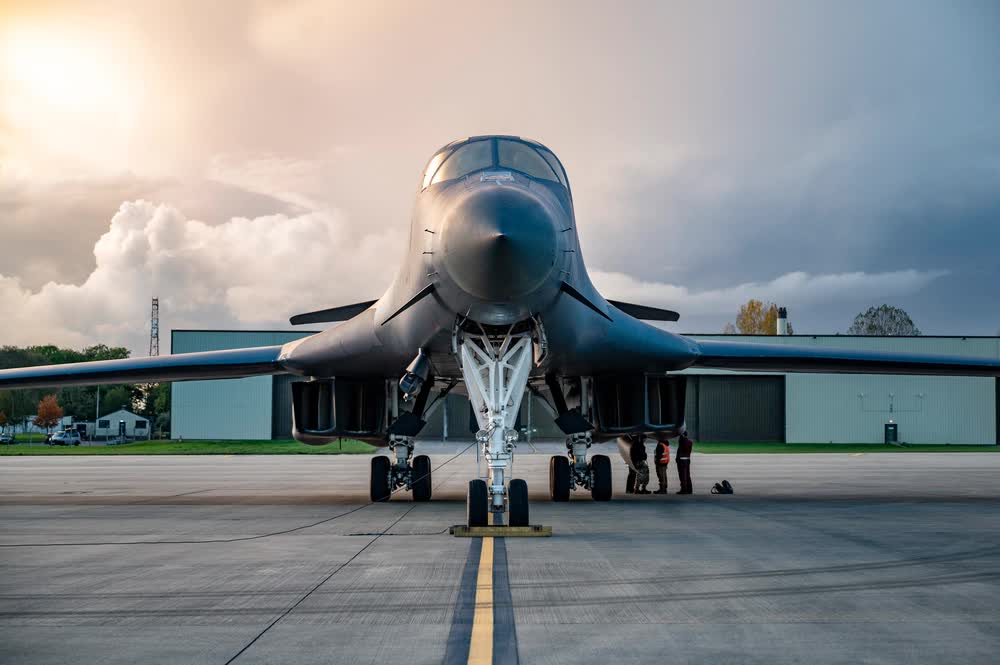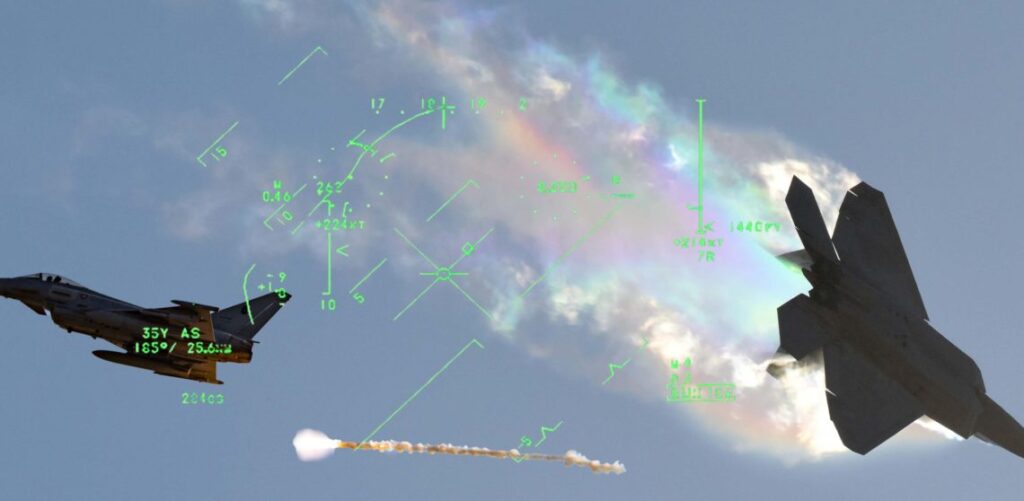On Thursday, U.S. Air Force F-22 Raptors intercepted a pair of Russian military planes as they entered into America’s Alaska air defense identification zone (ADIZ), just days after conducting similar intercepts of Russian bombers in the same region. This time, the Russian aircraft, which were both reportedly IL-38 maritime patrol planes, had come within 50 miles of the Alaskan island of Unimak and then proceeded to spend a full four hours in the area.
A pair of F-22s, America’s most capable air superiority fighters, intercepted the Russian planes and escorted them out of the area. Thursday’s intercept marks the fifth time American fighters had to shoo Russian bombers and other aircraft away from U.S. Air Space this month, and the ninth time this year. A number of those intercepts included Russia’s Tu-95 long range, nuclear capable, heavy payload bombers, as well as Su-35 fighter escorts.

The Su-35 is a fourth-generation fighter, meaning it lacks stealth capabilities, but is still regarded as among the most capable dogfighting platforms on the planet. The Su-35’s powerful twin engines are capable of propelling the fighter to a top speed of Mach 2.25, far faster than an F-35 Joint Strike Fighter, and each comes equipped with thrust vectoring nozzles that allow the aircraft to perform incredible acrobatics that most other fourth and even fifth generation fighters simply can’t.
That is to say that Russia is clearly taking these incursions into America’s backyard seriously, sending some of their most capable platforms on these missions.
America’s F-22 Raptor, however, also comes equipped with twin, thrust vectoring power plants, which in conjunction with its stealth capabilities, likely makes the F-22 the most fearsome air superiority fighter on the planet.
Are Russian bomber intercepts common for the U.S. or its allies?
The short answer is yes. The United States and Russia have a long history of staring matches in the Alaskan ADIZ, but many other nations, particularly members of NATO, often mount their own intercept flights as Russian pilots encroach on their air space as well.

Russia regularly conducts long-distance bomber missions all over the world, sometimes prompting an intercept response from nations that feel threatened by their bomber presence. According to the BBC, Royal Air Force intercept fighters have ushered away Russian bombers and other aircraft encroaching on their airspace no fewer than ten times since the beginning of 2019.
What is Russia trying to accomplish?
Like many military operations, these flights are motivated by multiple internal and external factors.
Training and Preparation
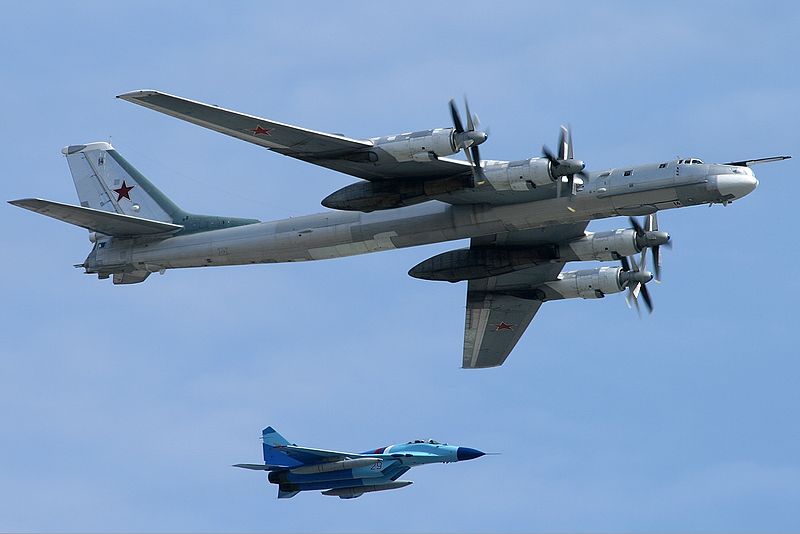
The primary reason behind these long-range flights, particularly for heavy payload bombers, is simply training. In order to be able to execute these long range bombing missions in the event of real war, Russian pilots conduct training flights that closely resemble how actual combat operations would unfold.
It’s worth noting that the United States conducts similar long-range training flights with its own suite of heavy payload bombers, including the non-nuclear B-1B Lancer and the nuclear capable B-52 Stratofortress. Long duration missions can be dangerous and difficult even without an enemy shooting back at you — so it’s in the best interest of nations with long range bomber capabilities to regularly conduct long range flights.
Long range missions require a great deal of logistical planning as well, as bombers are often accompanied by fighters that don’t have the same fuel range as the massive planes they escort. That means not only coordinating with escort fighters from multiple installations, but also managing support from airborne refuelers and flights of Advanced Warning and Control (AWAC) planes. Executing such a complex operation takes practice, no matter the nation conducting them.
Posturing in the face of opponents
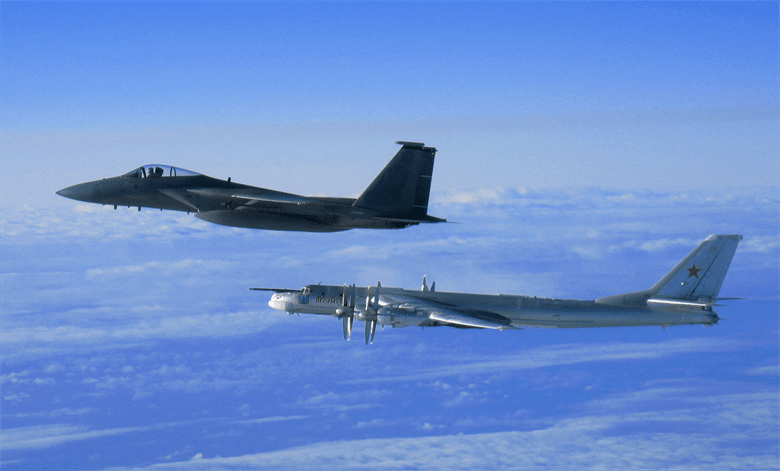
An important part of Russia’s foreign policy is maintaining the threat they represent to diplomatic opponents (like the United States and its NATO allies). Deterrence is the ultimate goal of many military operations, and demonstrating the capability to launch long-range strikes against national opponents is meant to support that doctrine.
The concept of using a strong offense as a good defense dates back to when mankind first starting sharpening sticks to defend their territory, and is perhaps best demonstrated in a modern sense by America and Russia’s nuclear deterrent approach of Mutually Assured Destruction (MAD). The premise behind MAD is simple: by maintaining a variety of nuclear attack capabilities, it makes stopping a nuclear response to an attack all but impossible. In other words, if the U.S. launch nuclear weapons at Russia, Russia would be guaranteed to fire their own back at the U.S., and vice versa.
The promise that one nuclear attack would immediately result in a large-scale nuclear war is seen as deterrent enough to keep nuclear powers from engaging in such a terrible form of warfare… at least thus far.
Making the nuclear threat feel mundane

The third, and perhaps most nefarious, reason behind these flights that prompt intercepts from U.S. or allied fighters is as a means of desensitizing military personnel and even civilian populations to the presence of Russian bombers or other aircraft on our doorstep.
Because each of these flights prompts a flurry of headlines form major media outlets, many Americans have taken to dismissing these flights as so commonplace they hardly warrant the webspace. Likewise within the military, conducting frequent intercepts of Russian aircraft can leave some pilots and commanders increasingly complacent about the threat these aircraft potentially pose.
Imagine a bear breaking into your trash can every couple of months. The first few times, you’d be pretty scared and concerned. You might even set up cameras and invest in some bear-spray you can use to deter the bears from coming back. After a few months of sporadic bear visits, that fear turns to annoyance, as you begin to feel as though the bear isn’t a threat to you, but is an inconvenience in your life.
After years of dealing with the same bear digging through your trash, you would likely stop seeing the bear as a threat to your safety and adopt a more neutral approach to rolling your eyes and swearing under your breath every time it comes lumbering up to your old trash can.
The bear itself is no less dangerous to you than it was the first time you saw it and panicked, but your perception of the bear has shifted. Now, while you’re aware that it could hurt you, you’ve also developed an understanding that it probably won’t. You may even start to ignore it from time to time. That unintentional complacency brought about through familiarization will leave you less primed to react if the bear suddenly does pose a threat to your safety.
#Footage Four #RussianASF‘s #Tu95MS strategic missile carriers performed a scheduled flight over the neutral waters of the Chukchi Sea, Bering Sea, the Sea of Okhotsk and the Northern Pacific https://t.co/7pAmwwfZFM #RussianAirForce #LongRangeAviation #F22 #USAirForce pic.twitter.com/xNwOfXguBg
— Минобороны России (@mod_russia) June 17, 2020
The slight delay in your response, brought about by complacency, could be all the bear needs to do some real damage. The same can be said about Russian Tu-95 Bear bombers.
How to combat complacency with a Russian “Bear” in your yard
Complacency isn’t just a concern when it comes to Russian aircraft or curious bears. Letting your guard down is a constant concern for service members on the front lines of any conflict.
Military protocol is one powerful tool in the fight against complacency, because it mandates a threat response and outlines its proper execution. In other words, the U.S. Military doesn’t have to make any specific decisions at the onset of identifying a potential threat. Instead, they execute the tasks on their threat response checklist to gather vital information, prepare a response, and in these cases, intercept the bombers.

In this way, America can turn the potential threat of complacency into a valuable training operation, wherein U.S. personnel act as though this Russian bomber flight could be a real attack. Of course, the risk of complacency remains, but that’s why continuous training and preparation is an essential part of American defense.
Whether it’s Russian bombers or a wayward Grizzly, if you treat every interaction like it could be dangerous, you’ll be better prepared in the event that it is.
This article was originally published 6/29/2020
